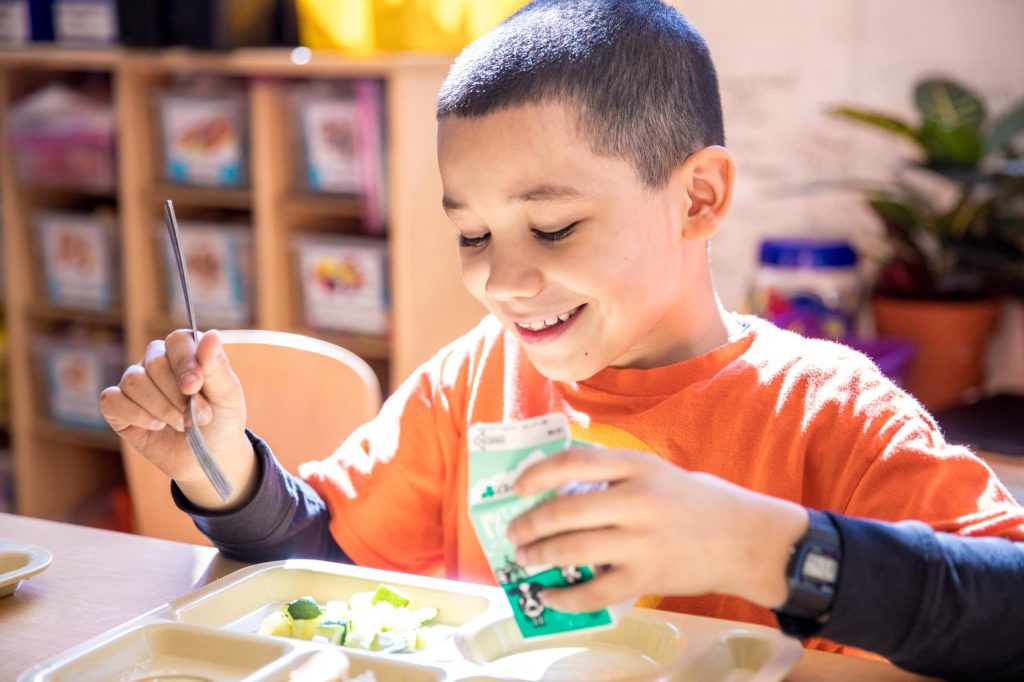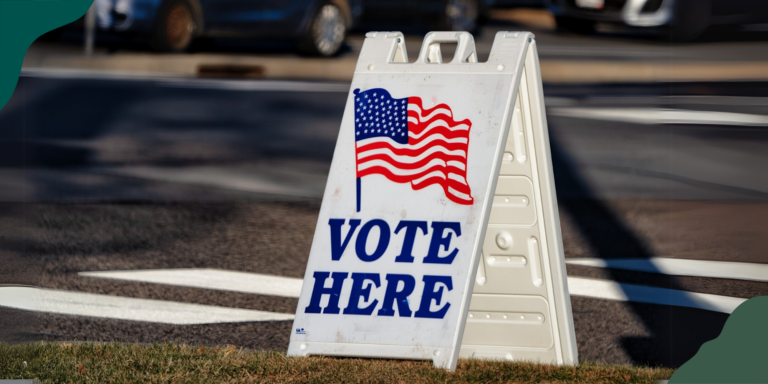How We Talk About Food in Schools Matters
FoodCorps co-founders Curt Ellis and Cecily Upton share the power of storytelling in the food justice and food equity movements.
FoodCorps co-founders Curt Ellis and Cecily Upton share the power of storytelling in the food justice and food equity movements.

Last week, the Washington Post ran a special spotlight on eight elementary school cafeterias across diverse parts of our country. Accompanied by pictures of bright and inviting lunchrooms, trays loaded with fresh produce and delicious entrees, and kids enjoying their mealtime experience, the article illuminated how school nutrition professionals are part of the solution to set our kids up for success at school and beyond.
We were heartened by the Post’s reporting, which confirms what we see every day in the 375 schools where our AmeriCorps members partner with school nutrition professionals to connect kids to healthy school meals.
But all too often, stories about school food strike an alarmist tone, spread unfair and incomplete visual portrayals of what school meals look like, and demean the work of school nutrition professionals and school communities who play critical roles in the lives of kids.
Think about school meals: are you tempted to see a problem rather than a solution?
It’s easy to fall back on negative stereotypes of school meals. We know––we’ve made that mistake ourselves. But when we do that, we overlook a sweeping food justice and food equity movement that’s happening right now in thousands of our cafeterias, communities, and classrooms.
How we frame our stories matters. For every negative story about school lunch, our society takes one step back by reinforcing stereotypes, stigmatizing kids and school nutrition professionals, and sensationalizing a national school meal program that has been on an ambitious trajectory of improvement. These negative stories lead to cynicism, a lack of support for the leaders in the field, and an erosion of parent support and student participation in school meals.
That’s why we celebrate stories like the one in the Post, and why FoodCorps aims to collaborate with partners in our work to lift up diverse voices from our school communities, highlight the positive achievements of our school nutrition leaders, and model a present and a future that celebrate hands-on learning, vibrant school gardens, and healthy school meals. It’s nuanced stories––of how-done-it successes, and still-in-it challenges––that flip the tired script on school lunch stereotypes, and accelerate progress in our nation’s school system.
Stories can be powerful tools in our work. They can create the space for positive policy change, help innovations to spread, and build movements of supporters for our cause.
What are the stories of school food that most need telling right now? How might those stories change the narrative—and inspire people to view school meals as value centers that can be leveraged to benefit kids and local economies? Through the stories we tell, how might we position school cafeterias as a hub for creativity, sustainability, and a source of national pride?
Our school cafeterias are getting the national spotlight they deserve. Let’s ensure that moment isn’t defined by misperceptions. FoodCorps plans to hold ourselves and the partners and storytellers we engage to a higher standard, and we celebrate our peers who are with us.
For a window into what school meals really look like, check out the #schoolmealsthatrock hashtag or Instagram, the LIVE From My Desk video series, and seek out opportunities to learn more about what’s happening in your own school community. We’re committed to doing the same, and we promise to share with you what we find.

9 Thoughtful Holiday Gifts Made by FoodCorps Alumni

The Policy Brief, Fall 2024: After the Election

Food as Medicine: Teaching Indigenous Foodways